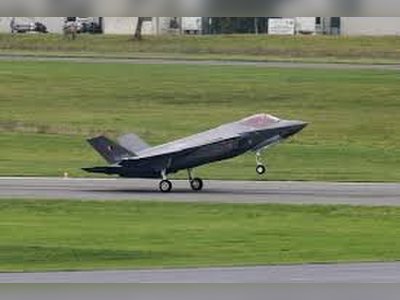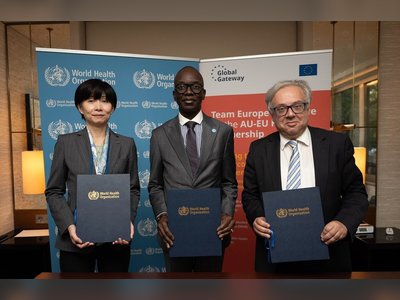“Firepower” Promised for Ukraine as NATO Ministers Meet — But U.S. Tomahawks Remain Undecided
U.S. Defense Secretary Pete Hegseth says European nations will deliver firepower to Ukraine through U.S. weapons purchases, while the decision to supply long-range Tomahawks rests solely with President Trump.
U.S. Defense Secretary Pete Hegseth pledged on Wednesday that “firepower.
that’s what is coming” to Ukraine, as NATO defense ministers convened in Brussels.
He said that European “commitments” will soon translate into “capabilities” under the new Prioritized Ukraine Requirements List (PURL) framework, which already has two billion dollars pledged.
Whether American-made Tomahawk missiles will be part of that support, however, remains unresolved.
President Volodymyr Zelensky of Ukraine is expected to press President Donald Trump on Friday at the White House for access to Tomahawks—highly precise cruise missiles capable of striking deep within Russia should they be approved.
Trump has previously hinted at a possible green light, though he has not committed.
NATO Secretary General Mark Rutte described the matter as “a bilateral question” between the United States and Ukraine.
The missile issue was not placed on Wednesday’s defense ministers’ agenda.
Meanwhile, allied nations committed to other aid: Britain pledged one hundred thousand drones and the Netherlands provided ninety million euros to support Ukraine’s domestic drone production.
These pledges reflect heightened urgency after recent Russian incursions into NATO airspace, including suspected drone flights over Poland that elicited NATO aircraft response.
British Defense Secretary John Healey warned that Russia’s actions were “reckless, dangerous, and totally unacceptable,” and confirmed that British aircraft would maintain operations in Polish airspace through year’s end.
Dutch Defense Minister Ruben Brekelmans lauded recent F-35 deployments in Poland for neutralizing Shahed drones, but cautioned that fighter jets are inefficient for countering drone threats and urged development of dedicated systems.
Latvian Defense Minister Andris Sprūds emphasized the importance of Ukraine having the ability to strike into Russian territory.
“If Russia bombs civilian infrastructure, then Ukraine has the legitimate right to hit military targets in Russia,” he said.
“We are projecting that Ukraine must be able to hit deeply”.
Finland’s Defense Minister Antti Hakkanen added that Russia’s military buildup near NATO borders means the threat will outlast the Ukraine war.
He warned that Moscow is preparing for a second phase of aggression and must be deterred accordingly.
The broader context underscores Europe’s growing burden in Ukraine’s defense.
PURL is intended to shift procurement responsibilities for U.S. systems to allied nations rather than relying solely on American direct arms transfers.
Still, pledges to date fall short of Kyiv’s target—leaving room for Trump’s decision on Tomahawks to reshape the next phase of support.
Hegseth also issued a stern message to Moscow: should Russia refuse peace, it will face costs at Washington’s direction.
His remarks reflect mounting U.S. resolve to back Ukraine, even as allies deliberate deeper contributions.
that’s what is coming” to Ukraine, as NATO defense ministers convened in Brussels.
He said that European “commitments” will soon translate into “capabilities” under the new Prioritized Ukraine Requirements List (PURL) framework, which already has two billion dollars pledged.
Whether American-made Tomahawk missiles will be part of that support, however, remains unresolved.
President Volodymyr Zelensky of Ukraine is expected to press President Donald Trump on Friday at the White House for access to Tomahawks—highly precise cruise missiles capable of striking deep within Russia should they be approved.
Trump has previously hinted at a possible green light, though he has not committed.
NATO Secretary General Mark Rutte described the matter as “a bilateral question” between the United States and Ukraine.
The missile issue was not placed on Wednesday’s defense ministers’ agenda.
Meanwhile, allied nations committed to other aid: Britain pledged one hundred thousand drones and the Netherlands provided ninety million euros to support Ukraine’s domestic drone production.
These pledges reflect heightened urgency after recent Russian incursions into NATO airspace, including suspected drone flights over Poland that elicited NATO aircraft response.
British Defense Secretary John Healey warned that Russia’s actions were “reckless, dangerous, and totally unacceptable,” and confirmed that British aircraft would maintain operations in Polish airspace through year’s end.
Dutch Defense Minister Ruben Brekelmans lauded recent F-35 deployments in Poland for neutralizing Shahed drones, but cautioned that fighter jets are inefficient for countering drone threats and urged development of dedicated systems.
Latvian Defense Minister Andris Sprūds emphasized the importance of Ukraine having the ability to strike into Russian territory.
“If Russia bombs civilian infrastructure, then Ukraine has the legitimate right to hit military targets in Russia,” he said.
“We are projecting that Ukraine must be able to hit deeply”.
Finland’s Defense Minister Antti Hakkanen added that Russia’s military buildup near NATO borders means the threat will outlast the Ukraine war.
He warned that Moscow is preparing for a second phase of aggression and must be deterred accordingly.
The broader context underscores Europe’s growing burden in Ukraine’s defense.
PURL is intended to shift procurement responsibilities for U.S. systems to allied nations rather than relying solely on American direct arms transfers.
Still, pledges to date fall short of Kyiv’s target—leaving room for Trump’s decision on Tomahawks to reshape the next phase of support.
Hegseth also issued a stern message to Moscow: should Russia refuse peace, it will face costs at Washington’s direction.
His remarks reflect mounting U.S. resolve to back Ukraine, even as allies deliberate deeper contributions.
AI Disclaimer: An advanced artificial intelligence (AI) system generated the content of this page on its own. This innovative technology conducts extensive research from a variety of reliable sources, performs rigorous fact-checking and verification, cleans up and balances biased or manipulated content, and presents a minimal factual summary that is just enough yet essential for you to function as an informed and educated citizen. Please keep in mind, however, that this system is an evolving technology, and as a result, the article may contain accidental inaccuracies or errors. We urge you to help us improve our site by reporting any inaccuracies you find using the "Contact Us" link at the bottom of this page. Your helpful feedback helps us improve our system and deliver more precise content. When you find an article of interest here, please look for the full and extensive coverage of this topic in traditional news sources, as they are written by professional journalists that we try to support, not replace. We appreciate your understanding and assistance.










